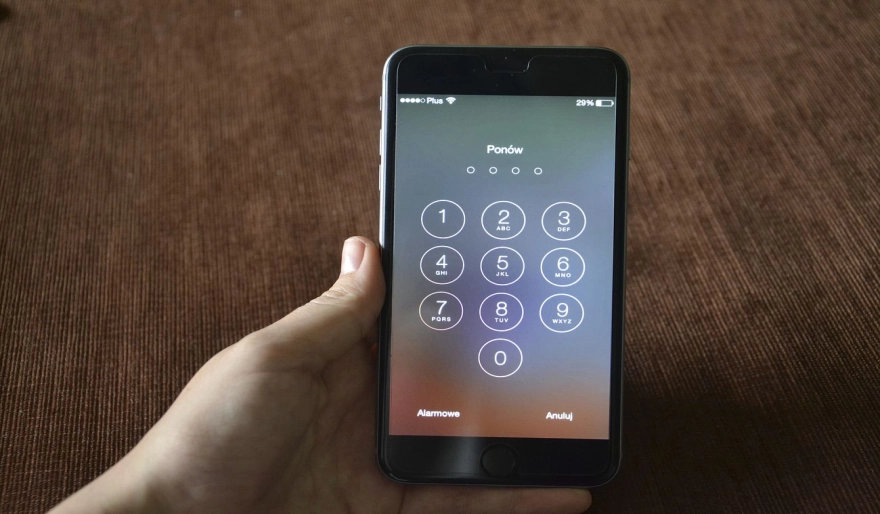Securing Your Android Phone with Encryption
10 min read Securing Your Android Phone with Encryption - written by Jason kyllie, Content Creator April 21, 2024 10:06
1. Introduction to Android Phone Security
There are many reasons for encrypting your phone's
data. The most obvious is if you are a large user of the phone for email,
social media, and web searches. Then the only, or most common, method of
safeguarding your electronic correspondence is the 4-6 digit key protection on
the phone. Also, in these same activities, you are creating a treasure trove of
personal information, such as phone numbers, screen names, and addresses, which
you would rather not be dictating in an automated home. Furthermore, with the
phone placed into airplane mode or shut off, a protective key will effectively
deny one from sneaking into a house or office and immediately allowing you to
unlock your credit card or bank account. Such information could not be used by
a lost or stolen phone, but the data could be extracted by a savvy hacker.
Therefore, rather than leave the information at risk or delay the important
tasks of securing a device until after the loss, experts advise encrypting the
valuable data on your phone and securing the phone itself with a long, strong
password.
Not many people understand smartphone security, and
fewer people take advantage of it. This is consistent with our habits: what
requires the least amount of clicks gets the most use. Since no encryption is
provided on a standard Android phone installation, end users must elect to set
up their own security features, and here, so many of us fail. Indeed, it struck
many as a surprise that a smartphone could be encrypted in the same way as
their workstations and servers. This article seeks to raise awareness about the
security options for your Android phone and explain in detail how to encrypt
your device and protect your data.
2. Understanding Encryption and Its Importance
The user might have noticed an important word in that
last bit - 'can'. Just because the attacker is in possession of the user's
encrypted data, it doesn't necessarily mean they 'can' restore or view that
hidden data. This is especially the case if the user has a strong passphrase on
the phone. After allowing the device to boot, the device will stay encrypted.
This is basically how Android devices protect the user's sensitive information,
even though they might be physically lost or stolen. Access control might be
present while the device is off. However, attacks might be developed to bypass
this protection. If you have strong data encryption in your device and there is
someone that wants your encrypted data, it might take unfeasibly long for the
person to decrypt all the user's encrypted data using the ordinary ways.
Encryption, which is the process of encoding
information so that only authorized parties can read it, is a highly essential
feature offered by many Android devices. It is often used to protect data
whether the user is simply storing it on the device or sending it across the
network. This protection is vital so that the user's private data could not be
accessed by unauthorized parties. An attacker who, in the worst case, can copy
the needed data from the physical chip of the user's device could be a CM
personnel. However, with the Android device encrypted, an untrusted CM would
not be able to restore or view decrypted data without knowing the underlying
keys used for that operation.
3. Setting Up Encryption on Your Android Phone
To start the process of securing your Android device,
you will first need to encrypt your data. Your smartphone is only safe while
the screen is locked if the data is encrypted. Once the data on your device is
scrambled, it is made useless and unreadable unless it is unlocked by the
operating system when you enter your password or personal key. For that reason,
encryption is essential for your digital defense. In order to do all of this,
encryption on some devices may take a while. If the device restarts or the
battery is empty during the setup process, the encryption setup is interrupted,
and some of the data is lost. Be sure to plug in your device and proceed only
once all of the downloading is complete.
By enabling storage encryption on your Android phone,
tablet, Chromebook, or other device, you can ensure that your data remains
safe. We'll walk you through how to enable this and other important security features
on your Android device. After having our say on the matter and listing what you
need to do to encrypt your device and secure its settings, we'll look at
additional ways to safeguard your data - from dangerous Wi-Fi hotspots to
ransomware.
4. Best Practices for Maintaining Encrypted Android Phones
4.2. Management of Device Encryption Compliance
Understand the risk of device encryption for unpatched or outdated Android
devices where no longer support the updated operating system that can expose
vulnerabilities exploited by attackers. Proactive management of device
encryption compliance includes the risk associated with updating the Android
build to ensure compatibility and continuously updating the Android build when
there is a new release. Regularly check and maintain device encryption
compliance status including inventory and continue to encrypt the device in
case it is not encrypted. Device encryption non-compliance remediation protects
devices from potential attacks. Full disk encryption setting rules include
encryption password policies and all restrictions that protect the company's
information in case of a company device.
4.1. Securing Personal Data after Phone Device
Encryption To enhance security, replace default applications with third-party
apps. Utilize silent SMS alert and tone message which ensure that your phone
will not beep or vibrate when there is an incoming message if the phone is
connected to another phone belonging to a hacker. Utilize free services
including WhatsApp by activating an end-to-end encryption feature where
encryption works by converting the messages into the ciphertext on the sender's
device. Protect password with reliable apps that are not from the Android
default system. Follow steps for the caution about the encryption where there
is a warning with no possibility of recovery if the password is forgotten.
Upon encrypting your Android phone, you should take
further steps to safeguard your personal data, manage the encryption
compliance, replace the default app to enhance security with third-party apps,
and address common issues following adoption of device encryption.
5. Advanced Security Measures for Android Phones
Smart choices as words establish patterns and habits.
The more good patterns we form that lead to better habits, the safer we will
be.
1) Secure Boot Chain: Requires boot configurations to go through a chain of trust and ensures that Android recovers safely from serious attacks like tampering with boot settings to load unauthorized software. 2) Verified Boot: Compares device firmware to verify it has not been tampered with and is secure to boot. If the firmware is not secure, the device enters recovery mode and steps are initiated to resume safe operations. 3) OEM Unlocking: It allows users to unlock the bootloader. However, this feature must be disabled before securing the device again. 4) Find My Device: The service uses GPS to help identify the location and recover a stolen phone. 5) Rollback Protection: For those devices supporting it and running Android 7.0 or higher, Rollback Protection will prevent an attacker with physical access to the device from downloading an older software version and exploiting a known security vulnerability. Only packages with a matching cryptographic signature, manufactured in the Android build factory, are allowed to install and run.
User Comments (0)
Popular Apps










Editor's Choice









